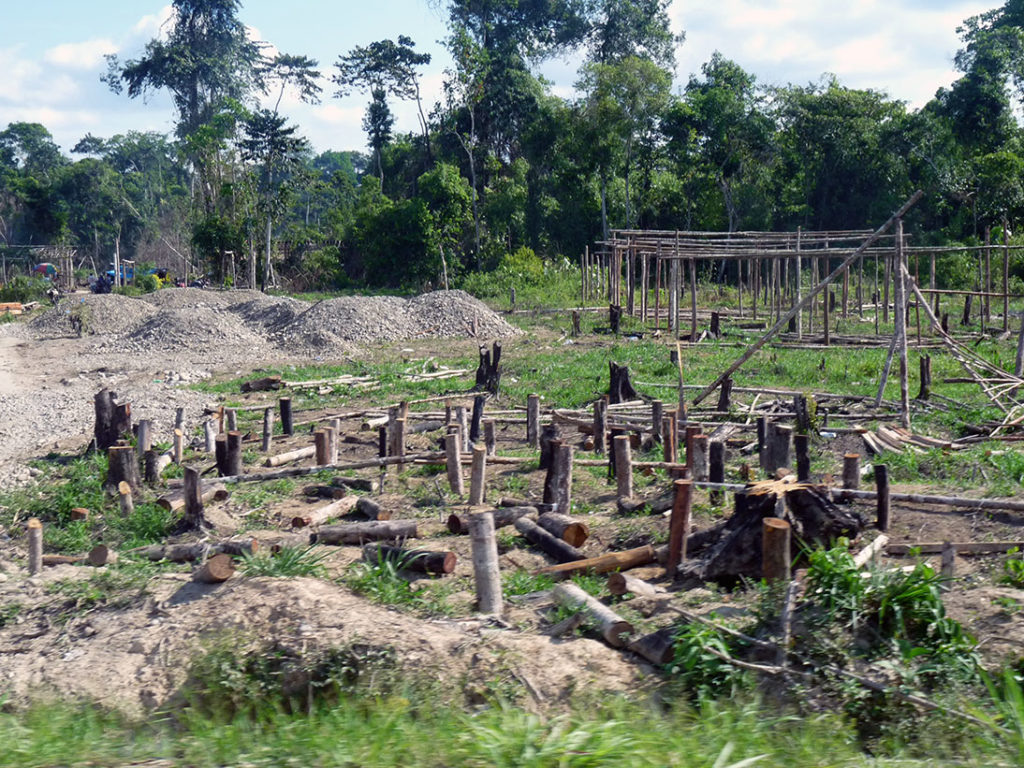Photo: Liliana García/DAR
- Report prepared by Derecho, Ambiente y Recursos Naturales (DAR) (Law, Environment and Natural Resources) analizes the main agricultural processes that would conduce to forests’ loss.
- It is urgent to adequate the agricultural normative with the new forest law.
Lima June 21, 2016.- Derecho, Ambiente y Recursos Naturales-DAR, has prepared a report analyzing the main processes involved in the development of agricultural activities that affect public lands with forest. The aim of this report is to make shed light on the problems derived from forests loss.
The report is based on the legislative decree Nº 653 – one of the principal normative frameworks in our country on agricultural land’s awarding and titling. It is also based on the new forest legislation and on the Environmental Impact Evaluation National System (SEIA in Spanish) legislation in the agricultural sector, among others.
Through this report called “Processes that are involved in the development of agricultural activities in public lands with forests”(available in spanish), serious deficiencies were identified regarding the agricultural processes articulation. The scare multi-sectorial and multi-level coordination among the concerned institutions appeared as obvious.
This analysis also highlights the necessity to adequate the Rule of Classification of Lands by their Major Use Capacity to the new forest legislation. This would be an important step towards forests’ lands reclassification and the definition of the category of lands of protection, both being responsibilities included in the MINAGRI competences, with the participation of SERFOR and MINAM’s coordination. This adequation to the normative is necessary for the actualization of the National Map on Classification of Lands by their Major Use Capacity. Both topics should be prioritized by the authorities with the aim of make them available for the authorities that award lands and for other users too.
Thus, the report written by the two forest’ specialists Isabel Gonzales and Greta Román, underlines how important it is to include an evaluation of the territorial area with ecosystem services criteria – additionally to lands characteristics – in order to access the change of land use’s authorization (CUS) in public lands. This would reduce affectations to forests. This process is led by SERFOR, and needs the biding opinión of MINAM for which it a good coodination between them and with other concerned institutions is needed. Additionally, the report indicates that it is still pending to incorporate the process in the SERFOR’s Unique Text on Administrative Processes -TUPA.
The TUPAS of three Amazonian regional governments (GORE) have also been analyzed. It is clear that it is still outstanding to adequate lands’ awarding processes according to the new forest legislation, including CUS authorization in public lands.
The way the processes are presented could imply more time and budget that could difficult their implementation. This is why the report recommends to center efforts on administrative simplification, unification of the national normative and the elaboration of a procedure for the processes of State’s lands with forests awarding.
Finally, the challenge is that institutions like SERFOR, MINAGRI, MINAM and the GORE coordinate and be strengthen, especially in the Regional Governments since they actually are those with competency in lands awarding for agricultural activities development.
Thank you for sharing.
Follow us in Twitter: @ONGDAR / Look for us in Facebook: PERU DAR


